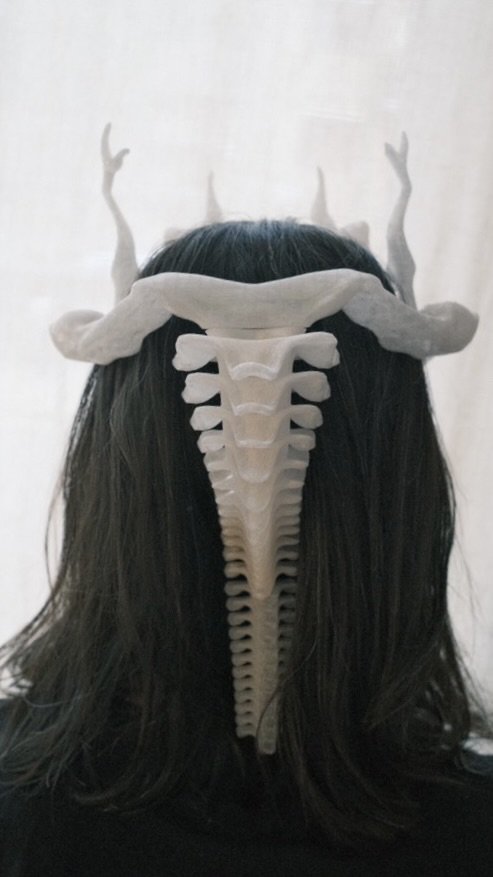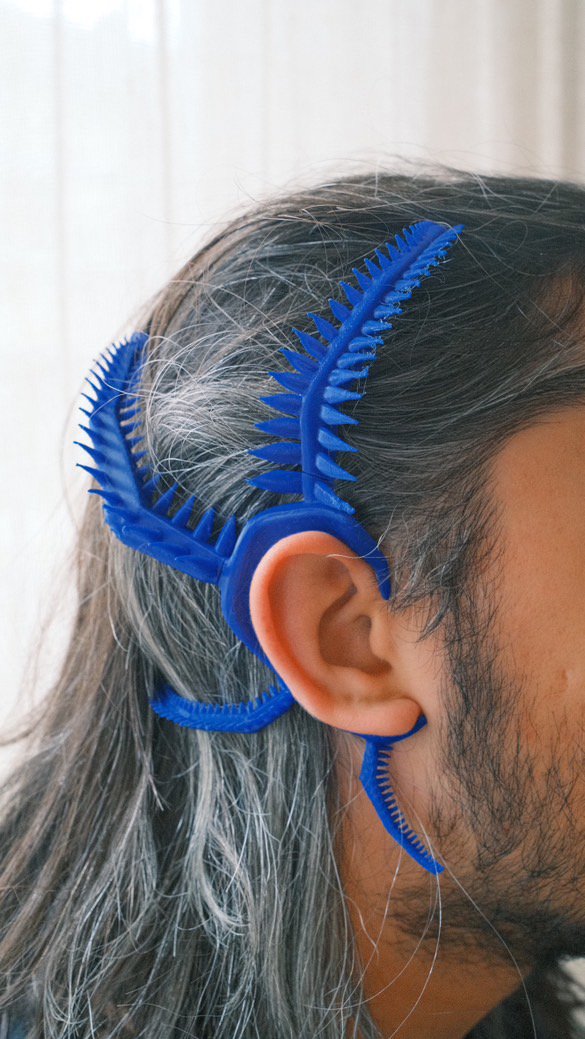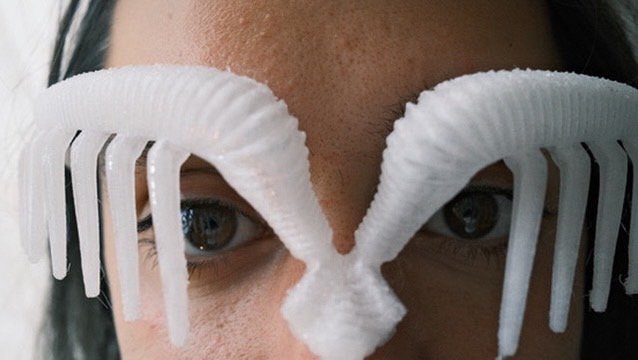Transmission 1948 //البث ١٩٤٨
Transmission 1948 is a series of fantastical wearable objects emerging from explorations into how memory, displacement, and anti-colonial resistance morph the body, its extensions, and ethereal connections. Each object is a narrative, part witness, part evidence, part disruption, embodying the past and imagining an alternate present and future
A Collaboration with Yara Al Husaini
1 - Reverence تماس
Visuals by Yara Al Husaini:
This fantastical organic wearable embodies the resurrection of the mountain deer, El-Ghazal. El-Ghazal returns from a state of enforced scarcity, made almost extinct in their own land through Israeli colonial brutality of the land. The Ghazal remembers drinking from ʿAyn al-Ghazal, the spring, and village, destroyed by Israeli occupiers in 1948. Now resurrected through the Palestinian body, the resurrected Ghazal reclaims the water that was once stolen from it.
Sound by Nicolas Baviere:
A sonic narrative of transformation; from devastation to harmony. The bass anchors past traumas: first centered like a suspended memory, then panned left, symbolizing history. A bird cries out in triumph “We have our land back!” and nature begins to return. On the right, the future awakens: river, insects, birds life restored and balanced. At the center, the ghazal reemerges, joyful, back at its source. A boy, once starving in Gaza, now laughs, his ghost lingering in a land that bears fruit.
The resonator effect reshapes the bass from menace into consonanceon the left, one chord; on the right, spring water in another. No dissonance. Even the boy’s laughter evolves into harmony, holding both sorrow and hope. A vision of a brighter future, rooted in the soil of resilience, where optimism itself becomes resistance.
2 - Resonance رنين
Sound by Nicolas Baviere
Left:
An evocation of war’s unbearable weight, genocide, destruction, abandonment. The silhouette, like the audience, is consumed by the pain unfolding in Palestine, especially Gaza. The piece opens with a journalist’s breathless report, followed by a young girl’s gasp, then chaos unfolds. In the left ear: sirens, screams, ambulances, gunfire, sounds multiplied through distortion, representing the unbearable density of violence in a single place.
In contrast, the right ear carries ten testimonies from women living under occupation. As their voices recount memories, they begin to fracture, mirroring the global refusal to hear them. Even when Palestinians speak, silence is imposed. The piece closes with the plea of an elderly woman buried under rubble, her voice drowned in noise. A raw depiction of a horrifying daily truth.
Visuals by Yara Al Husaini:
This fantastical wearable organic device reimagines and amplifies the Palestinian soundscape. It is able to channel, layer, and imagine sounds, morphing with the memory of the ear of it's Palestinian wearer. The left hand side video presents a cumulative soundscape of living under occupation, specific to the wearer. The right hand side video imagines a personal-collective soundscape of Palestine, in absence of the brutality of Israeli occupation.
Right:
A moment of imagined peace, where clarity replaces noise, and violence vanishes. As the character dons an earpiece, the world reshapes into what freedom might sound like. A soundscape of birdsong and wind forms the foundation. A grandfather’s voice emerges, telling of a time when harmony existed between people and place.
A traditional instrument sustains a sympathetic chord across a vast sonic landscape. Laughter drifts in gently as the character falls asleep smiling. Gradually, the voice transforms through resonator effects into melody, dissolving into the music itself. The memory, the voice, and the land become one.
3 - Luminance نورانية
Sound by Nicolas Baviere:
A collective protest in sound, gathering the voices of Roger Waters, Marwan Barghouti, Francesca Albanese, Mahmoud Khalil, Riyad Mansour, Mahmoud Darwish, Rima Hassan, and two voices from Gaza: an elder and a child. Their calls echo in unity, surrounding the listener. Each voice is subtly fractured, revealing the systemic silencing of resistance.
Beneath them, a bass line begins in F, slowly unraveling into disarray, symbolizing how a single voice of dissent can spark a borderless, timeless resistance. Above, a rock-driven beat evokes protest rhythms, a reminder that sound can mobilize action. Like the unwavering gaze of an owl, the piece centers what matters: not governmental silence, but the courage of those who speak.
Visuals by Yara Al Husaini:
This fantastical wearable collects scenes seen through the Palestinian eye and interpreted through their lens, in turn, passing on this personal lived experience of its wearer to the next wearer. Like an owl’s brow structure does for the owl (aids channeling sound to heighten perception, giving the owl its wise eyes), this wearable ensures truth is seen, remembered, and clearly communicated.









